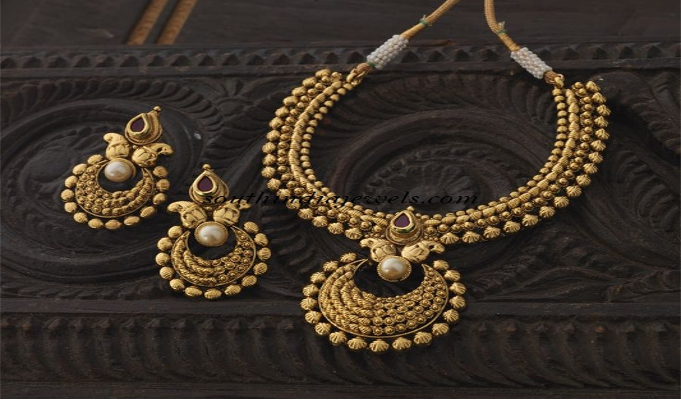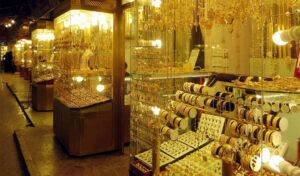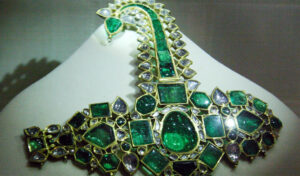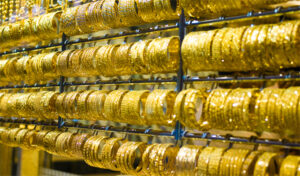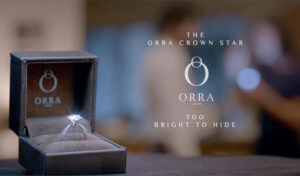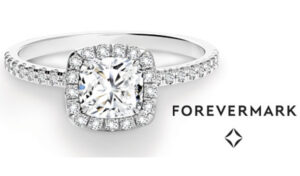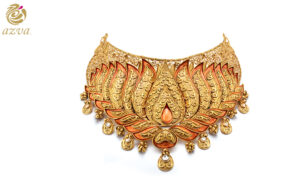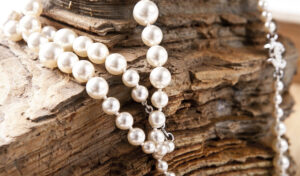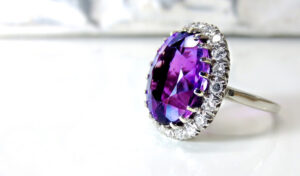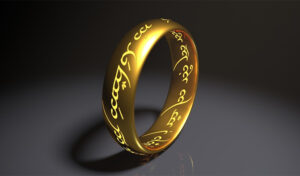From its auspicious slant to becoming a fashion statement, the significance of jewellery has evolved with time. Veteran luxury retail and lifestyle professional and independent consultant Anil Prabhakar sketches out the history of jewellery in India and shares his outlook of the industry in India.
1All That Glitters
Since time immemorial, jewellery in India has been an integral part of women’s lifestyle. Women from different economic strata have different lifestyles. Their jewellery choices therefore differ. In a diverse country like India, jewellery also has a cultural connect. Occasions such as festivals and weddings have religious significance that differs from region to region. Jewellery usage is thus rooted in geographical traditions.
Despite the fast spreading westernization trend in the country, 85 per cent still adhere to the wedding customs strictly. In Hindu marriages, wearing a mangalsutra is mandatory. Yet, the design and materials differ from region to region. While Gujaratis and Marwaris often go for diamond pendants and Maharashtrians wear a pendant of one or two vatis, Bengalis often have corals added to the design. In South India, the variation in the mangalsutra and the way it is arranged varies from region to region.
With the passage of time, a shift in the significance and preference of jewellery was apparent. Today, with global exposure and more educated women joining the workforce, jewellery has evolved to become a fashion accessory.
2Historical Background
Indian royalty’s affair with luxury is well-documented. The Nizams of Hyderabad, Wodeyars of Mysore, Gaekwads of Baroda and royal families of Patiala and Kapurthala were purveyors of luxury. They were big customers of international jewellers such as Cartier, Boucheron and Harry Winston. While gold has always been very popular, India is also the birth place of the world’s most famous diamond, Kohinoor. The Maharajas’ love also extended to natural coloured gemstones such as emeralds, rubies and sapphires. The positive outcome of the royalty’s fetish with gemstones led to the development of a rich skilled base and jewellery making traditions.
While Surat is well known for diamond cutting and polishing, Jaipur is known as the gemstone capital of the world. For centuries, Jaipur attracted the world’s best gems to be cut, polished and mounted, a tradition that dates back to the early 18th century when the ruling Maharaja Sawai Jai Singh II founded the city as the capital of Rajasthan.
Some of the rich jewellery traditions in India are kundan, polki and meenakari from Rajasthan, filigree from Odisha and pachi kaam from Gujarat. While Kolkata is famous for gold jewellery, Hyderabad is known for pearl jewellery and Banaras for its unique pink meena.
As a whole, the Indian subcontinent has a long continuous legacy of jewellery making with a history that claims to be of over 5,000 years.
3Market Size
The Indian gems and jewellery market is robust. With a market size estimate of Rs 3 lakh crore per annum, the sector is the second highest employer after the IT industry, employing roughly 2.5 million people and contributing to about 7 per cent of India’s GDP. Also, India is the largest consumer of gold in the world and the fourth largest consumer of platinum jewellery after China, Japan and the US. It is also the largest exporter for diamonds.
The jewellery retail landscape has changed dramatically over the past 15 years. The market though robust, is fragmented and largely unorganised. There are approximately 5,00,000 jewellery stores comprising mainly of small family run independent jewellers. The retail revolution started approximately a decade and a half ago and has gained momentum since then. Corporates such as Tata with Tanishq and Reliance have set up stores across the country. Jewellers such as Senco Gold, TBZ, Orra also have a sound national presence. Traditional South Indian jewellers such as Kalyan Jewellers, Malabar and Joy Alukkas also have a national footprint. Regional jewellers such as PNG, Ranka Jewellers and WHP from Maharashtra have a strong presence in their states and have ambitious expansion plans.
4Jewellery as Fashion, Art and Investment
Jewellery buying in India is an emotional process and the product category is associated with glamour and fashion. At the higher end, jewellery is also associated with art and investment.
In a cinema crazy country, the choice of Bollywood brand ambassadors is very common. Pune based Ranka Jewellers have appointed the mother-daughter duo Dimple and Twinkle Khanna as their brand ambassadors. In addition to the glamour quotient, the campaign has cleverly capitalised on the emotional bond that a mother shares with her daughter.
Dia Color, a high end jewellery brand, appointed Princess Mriganka Singh as their brand ambassador. Mriganka is the granddaughter of Dr. Karan Singh, the son of the last ruler of the erstwhile princely state of Jammu and Kashmir. Her royal lineage rubs off very well on the brand. Yesterday’s Maharajas are today’s industrialists and politicians. This connection has helped the brand attract the attention of the elite. When Mriganka married Nirvan Singh, the grandson of Amarinder Singh, the ex-chief minister of Punjab belonging to the royal household of Patiala, it was a bonus for the brand.
5Jewellery as Art
Jewellery making is an art that requires skills ranging from gemology, design, manufacturing and craftsmanship. When it is associated with arts and artists, the creations become classic heirloom pieces that command prices much above their intrinsic value.
Orra has always believed in treating jewellery as an art with curated designs. They have also collaborated with renowned artists like Anjoli Ela Menon and late S H Raza to launch some very unique collections. These turned out to be very positive for the brand adding to its stunning legacy.
The Bengaluru based jeweller Ganjam has taken the association with art to a different level altogether. The design of their 15,000 sq.ft. iconic flagship store is inspired by traditional Indian vignettes – the five elements of earth, that is, fire, air, water and ether, the ancient kingdom of Hampi, the peacock, the banyan tree and the Gandeberunda, a two-headed mythological bird, which symbolises the brand – the essence of which was captured and translated to create a highly elegant setting for Ganjam’s bespoke jewels. The store also houses an art gallery and won an award at the Prix Versailles 2016, held at the UNESCO headquarters in Paris. The store has been rewarded for interior store design by a jury of international architects and cultural experts.
6Jewellery as Fashion
Ironically, the biggest market for fashion designers and jewellers is the bridal market. Jewellery and apparel complement each other as both are lifestyle categories.
Weddings offer unique opportunities to synergise and spark new ideas. Indian weddings are incomplete without jewellery and clothes.
Fashion designers and jewellers have collaborated on the ramp for a long time. The former have dabbled into jewellery designing courtesy Forevermark. The brand partnered with Bibhu Mohapatra to debut an Artemis collection exclusive to India. A central Forevermark diamond emerges as the definitive element in each design. Bibhu has combined the surreal forms of the sun, moon and stars to create sensual, romantic jewellery. The central thought behind the Artemis collection was inner balance and outer strength, making it a very special collaboration for him.
Forevermark have also partnered with India’s ace designer Sabyasachi Mukherjee who has designed diamond jewellery collection Zayna exclusively for the brand. His line is fusion of Sicilian and Bengali jewellery made by Bengali craftsmen.
In addition to designing jewellery, Sabyasachi also retails jewellery from his boutiques in Mumbai and Delhi.
7Evolution of the Indian Jewellery Consumer
Vipin Sharma, the CEO of Azva has articulated the evolution very well. According to him, young Indian woman has evolved into a powerful persona who has her views on what she wants when it comes to her jewellery and personal style. Women today are well travelled, are more exposed to Indian as well as international trends and innovations, and have therefore developed an innate sense of luxury and style. While they appreciate and respect tradition, they also have an extremely keen eye on design and craftsmanship with personalisation and versatility being key to their decision making process when it comes to jewellery. Women are now looking for pieces that can be styled in a traditional as well as contemporary manner – Azva creations have jewellery pieces that have a longer shelf life beyond the wedding day and can be used for a host of occasions across their life span.
The reputed jewellery designer Farah Khan who has a large Bollywood clientele, opines that new age bridal wear is getting slimmer and less fussy. A young bride doesn’t want to invest in one large set that will find its way into locker once the occasion is over. Women today want statement pieces that are more fun to wear, but also have the ability to become heirloom pieces. Khan loves coloured gemstones and her collection makes an effort to revive traditional designs in a contemporary way.
According to Sachin Jain, President, Forevermark, Indian women with their high disposal income are now purchasing their own jewellery as a fashion statement. They prefer reliable brands with stylish, subtle designs, highlighting the sparkle of the diamond.
Reputed jewellery designer Poonam Soni makes an interesting point. According to her, the Indian woman holds a dual jewellery wardrobe—stylish designer pieces and larger opulent ones which are price friendly. A third important emerging style in her wardrobe is the branded fashion jewellery. Wedding jewellery is still opulent, larger than life, but tilted towards vintage looks.
Among the younger women, there is a very distinct shift in the preference for jewellery. They only want chic, light flowing pieces which accessorise their favourite ensemble, shoes and bags. Jewellery is secondary to their branded apparel. So, long necklaces, sautoirs, brooches, hairclips and stacked rings are popular with them.
8Importance of Millennials
Millennials or Generation-Y are consumers in the age group of 16 to 35 years and born between the years 1982 to 2001. India had 450 million millennials in the year 2015 up from 298 million in 1991. According to the 2013-14 Economic Survey, India will become the youngest country by 2021, with 64 per cent of its population in the working age group of 20-35 years. De Beers Diamond Insight Report 2016 states that Indian millennials are earning more than their parents and have high disposal incomes. Among all ages in the elite segment, 75 per cent of women place diamonds as their first preference in fine jewellery, with only 6 per cent preferring gold. This is especially positive, given the aspirational nature of diamonds in this market.
The report further says that self-expression and personal achievement are important life values for them. This could be achieved through individualisation of designs, branding and appropriate shopping experiences to fit the occasions and motivations for diamond acquisition. As in other luxury categories, brands are important for millennials.
Sharing his strategy to tap this lucrative segment, Jain says, “We at Forevermark, forecast trends each year based on insight and research. Keeping a strong focus on the beauty of the diamond, we create designs which appeal to our consumers. Capricci, the nose pin collection was launched keeping in mind the sentiments of the Indian woman. After a ring, nose pins are the most popular form of jewellery worn by women across the country. Our design team created a classic diamond nose pin, stud earrings and a charm bracelet with seven interchangeable jackets to appeal to the younger generation. The concept focused on ‘Wear What You Feel’. The idea of a single piece worn in multiple ways has even extended to the Pink Haze collection which entails Forevermark diamonds encased in rose gold, with detachable variations. We also believe in classic designs like the diamond bangle which we term as ‘The Circle of Trust’ which consists of 58 Forevermark diamonds in each bangle. The response for this bangle across segments has been phenomenal.”
For millennials, experiment is the key element of self-expression. They are not averse to mix-and-match precious and non-precious jewellery. In the absence of strong Indian brands in the fashion jewellery segment, an international brand Swarovski is the leader. It has 42 exclusive boutiques and is also available in reputed departmental stores such as Shoppers Stop.
To cater to this segment, proactive players such as Tanishq have already launched new sub-brands such as ‘Iva’ and ‘Mia’ collections for the fashion forward consumer. Mia jewellery is made of 14 kt gold and starts at a price of Rs 10,000. Iva, on the other hand, has created a new fine fashion jewellery category. Iva jewellery uses white topaz and other non-precious coloured gemstones to keep the price points affordable. Soni has also launched unique fusion designs cleverly mixing precious and non-precious elements.
9Going Digital
Digital media is the essential channel through which young people share information and influence each other. Their levels of digital interaction are much higher than among the older age groups. When it comes to shopping, millennials use online methods alongside visiting traditional brick-and-mortar stores. They will often compare prices online, search for product information and look for discount coupons and promotions online. Omnichannel shopping experiences are now the norm for younger consumers. Retailers who are not equipped for this will lose out among this client base. Social media plays an important role in product promotions. Sabyasachi launched his latest Firdaus collection on Instagram and not on the ramp. Khan has close to a million followers on twitter. She retails her creations from her own website and her own flagship store in Bandra. She has also collaborated with Caratlane and Tanishq to design exclusive collections for them.
Social media plays an important role in product promotions. Sabyasachi launched his latest Firdaus collection on Instagram and not on the ramp. Khan has close to a million followers on twitter. She retails her creations from her own website and her own flagship store in Bandra. She has also collaborated with Caratlane and Tanishq to design exclusive collections for them.
Manifest Design, a company formed by siblings Manreet Deol and Samraat launched contemporary sculptural jewellery in India for the first time in India. The brand believes that jewellery is a mélange of art, fashion and everything handmade. Thus, they create timeless pieces that are thoughtfully handcrafted and possess a soul that transcends style and cultural boundaries. Every day wearable art, is the guiding style mantra behind these gorgeous handmade ornaments whose inspirations are varied and eccentric. The indelible touch of the sculptor and the metal-smith are intrinsic to the pieces and add an additional layer of intrigue. Unconventional metals such as brass and aluminium are used with gold plating. Their jewellery is exclusively available on the company’s online store.
10Current Scenario
In the last one year, the Indian Government have brought the jewellery industry under the ambit of excise duty. It has become mandatory for all consumers to furnish pan card details for jewellery purchases of Rs 2 lakh and above. Demonetization of Rs 500 and Rs 1,000 notes has also impacted the fortunes of the industry adversely.
Most stakeholders have welcomed these initiatives. However, as articulated by Sharma, immediate effect of demonetization will result in softening of demand in the short run, cash flows that value chains have planned considering the start of the wedding season will get affected and pose challenges of planning and execution. Structurally, with GST round the corner, these policy changes will force businesses to get more organised and transparent, which is positive for the long-term growth and modernization of the industry.



